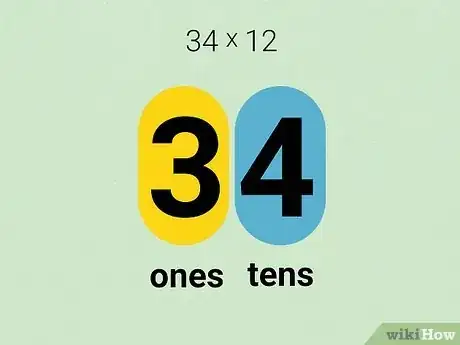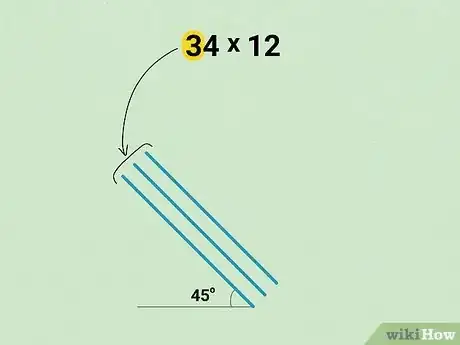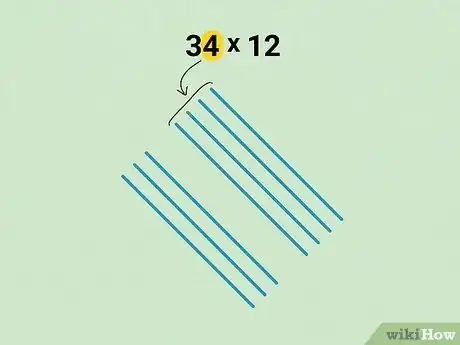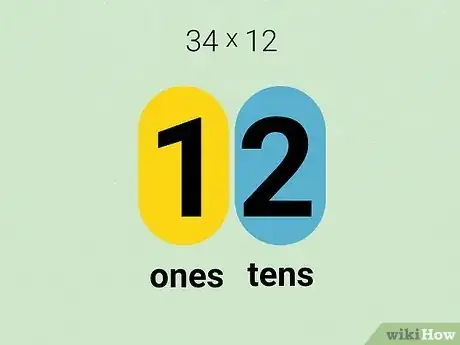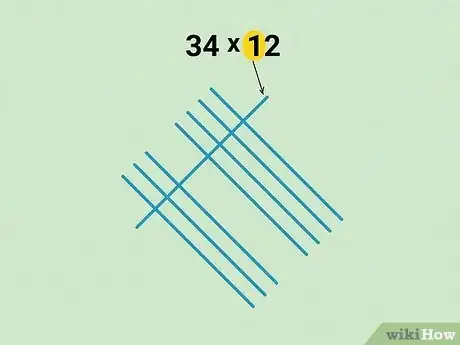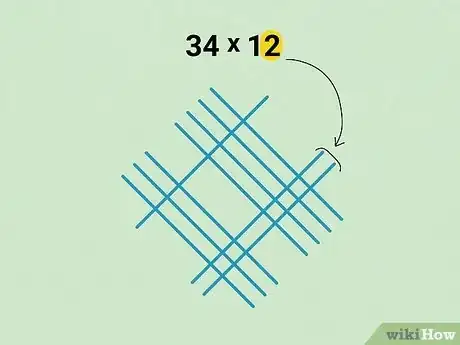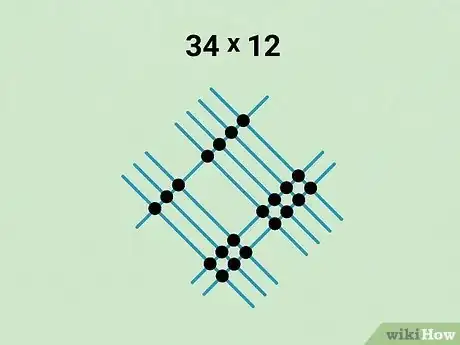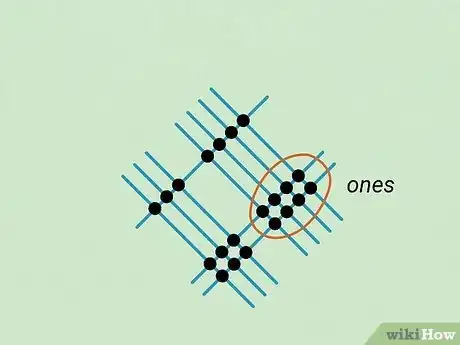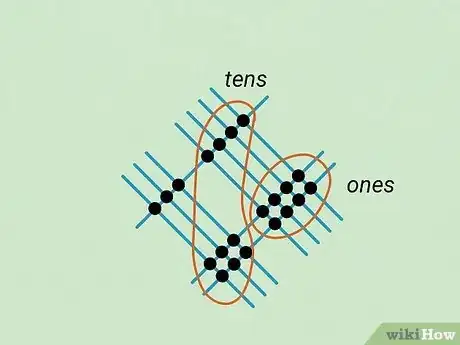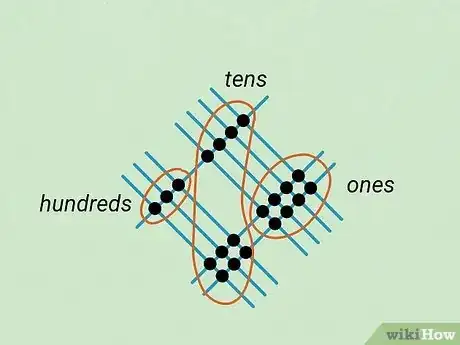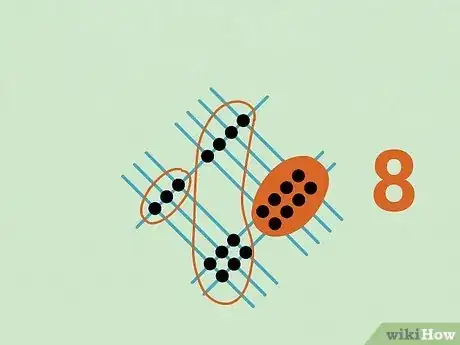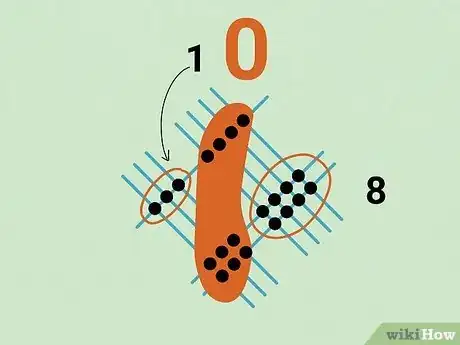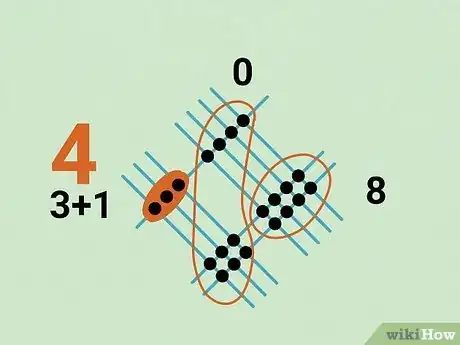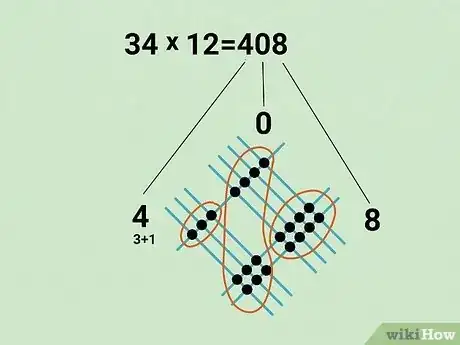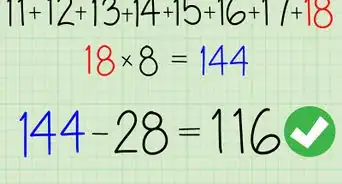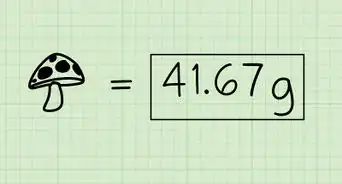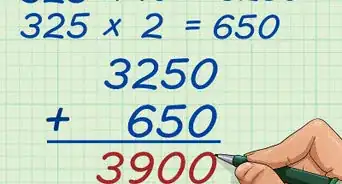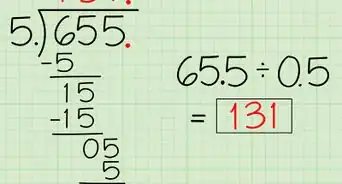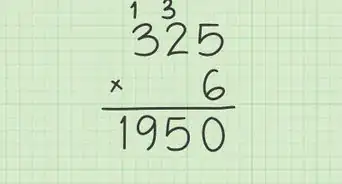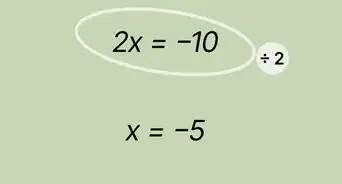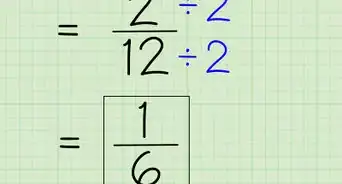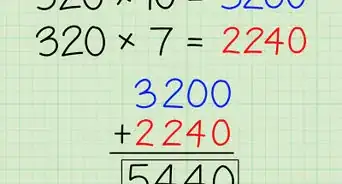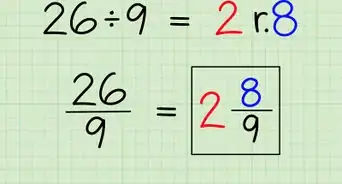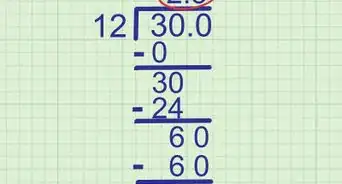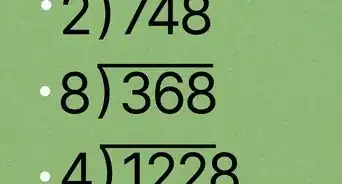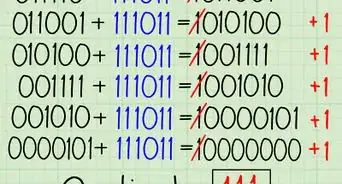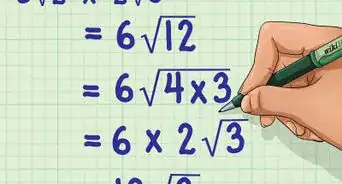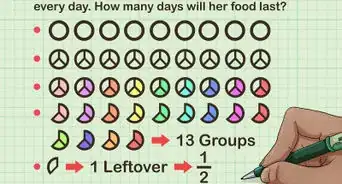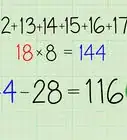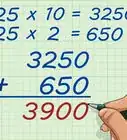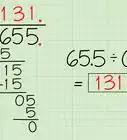This article was co-authored by wikiHow Staff. Our trained team of editors and researchers validate articles for accuracy and comprehensiveness. wikiHow's Content Management Team carefully monitors the work from our editorial staff to ensure that each article is backed by trusted research and meets our high quality standards.
This article has been viewed 148,239 times.
Learn more...
Line multiplication is sometimes called stick multiplication, and its origins are unclear, with some source claiming it comes from the Japanese,[1] Chinese, or Vedic cultures. It is basically the same process as the standard multiplication algorithm you are taught in school, except it is represented in a more visual way. Using the intersection of lines or sticks to represent where you multiply various place values, this method might be helpful for those learners who are more visually-oriented.
Steps
Setting Up the Problem
-
1Determine the place values of your first number. You need to know how many places are in your number, and what digit is in each place.
- For example, if you are multiplying , you would determine that the first number, 34, has a 4 in the ones place, and a 3 in the tens place.
-
2Draw parallel lines to represent the tens place of your first number. The number of lines you draw will correspond to the digit in the tens place.[2]
- Draw the lines at about a 45 degree angle, slanting down towards the right.
- For example, if you are representing 34, you would draw 3 parallel lines.
Advertisement -
3Draw parallel lines to represent the ones place of your first number. The number of lines will correspond to the digit in the ones place. Draw these lines above and to the right of the tens lines.[3]
- Leave some space between the ones lines and the tens lines, so you can tell them apart.
- For example, if you are representing 34, you will draw 4 parallel lines.
-
4Determine the place values of your second number. You need to know how many places are in your number, and what digit is in each place.[4]
- For example, if your second number is 12, you would determine that you have a 2 in the ones place, and a 1 in the tens place.
-
5Draw parallel lines to represent the tens place of your second number. The number of lines will correspond to the digit in the tens place. Draw the lines near the top of the diagram. They should cross all the lines of the first number, slanting in the opposite direction.[5]
- It might be helpful to draw each number’s lines in a different color.
- For example, if you are representing the number 12, you would draw 1 parallel line crossing over the sets of lines from the first number.
-
6Draw parallel lines to represent the ones place of your second number. The number of lines will correspond to the digit in the ones place. Draw the lines below the ones lines, so that they cross over all the lines of the first number, slanting in the opposite direction.[6]
- Leave some space between the ones lines and the tens lines, so you can tell them apart.
- For example, if you are representing 12, you will draw 2 parallel lines below the 1 line you drew for the tens place.
-
7Draw dots on each point where the lines intersect. In the line multiplication method, you will be adding up these lines instead of doing any actual multiplying.
Solving the Problem
-
1Circle the set of dots representing the ones place. These are the dots formed at the intersection where the ones lines for each number intersect.[7]
- Think, “A one times a one equals a one.”
- For example, for , you would circle the dots formed where the 4 lines intersect with the 2 lines, which are in the set on the right side of the diagram.
-
2Circle the two sets of dots representing the tens place. These are the dots formed when the ones digit of either number intersects with the tens digit of the other number.
- Think, “A one times a ten equals a ten.”
- For example, for , you would circle the dots formed where the 1 line intersects with the 4 lines, and where the 2 lines intersect with the 3 lines, which are in the middle of the diagram.
-
3Circle the set of dots representing the hundreds place. These are the dots formed at the intersection where the tens lines for each number intersect.[8]
- Think, “A ten times a ten equals a hundred.”
- For example, for , you would circle the dots formed where the 3 lines intersect with the 1 line, which is on the left side of the diagram.
-
4Add up the dots in the ones place. These are the dots you circled on the right side of the diagram. This number will be in the ones place of your answer.
- For , you should count 8 dots. So will be the digit in the ones place of your final answer.
-
5Add up the dots in the tens place. These are the two sets of dots in the middle of the diagram. This number will be in the tens place of your answer.[9]
- For , you should count 10 dots.
- Just like any time you add or multiply, once a digit in any place value reaches 10, you need to carry. So, if you count 10 for the tens place, you would place a in the tens place, and carry the 1 over to the hundreds place.
-
6Add up the dots in the hundreds place. These are the dots you circled on the left side of the diagram. This number will be hundreds place of your answer.[10]
- For , you should count 3 dots.
- Don’t forget to add any amount you carried over. For , you carried over a 1 from the tens place, so calculate . So will be the digit in the hundreds place of your final answer.
-
7Determine your final answer. Put together all the digits you found for each place value.[11]
- For example, for , you determine an goes in the ones place, a goes in the tens place, and a goes in the hundreds place. So your final answer is .
Community Q&A
-
QuestionWhat are the steps to use a number line to multiply a 2-digit number by 20?
 DonaganTop AnswererA number line is not useful in multiplication. Instead, think of multiplying by 20 as first multiplying by 2 (a relatively easy process) and then multiplying by 10 (which is done easily by moving the decimal point one place to the right). For example, to multiply 45 by 20, first multiply 45 by 2, which is 90. Then multiply 90 by 10: move the decimal point one place to the right, making 900.
DonaganTop AnswererA number line is not useful in multiplication. Instead, think of multiplying by 20 as first multiplying by 2 (a relatively easy process) and then multiplying by 10 (which is done easily by moving the decimal point one place to the right). For example, to multiply 45 by 20, first multiply 45 by 2, which is 90. Then multiply 90 by 10: move the decimal point one place to the right, making 900. -
QuestionWhat if there's a 0 in the problem?
 Community AnswerAnything multiplied by 0 is 0, so if there is a 0 in the problem, the answer is 0.
Community AnswerAnything multiplied by 0 is 0, so if there is a 0 in the problem, the answer is 0. -
QuestionWhat if there is a 0? For example: 203x21
 Community AnswerDon’t draw the line, but you can put something there as a placeholder. Or, draw the line in a different color but don’t count the intersecting spots because 0 times a number always equals 0.
Community AnswerDon’t draw the line, but you can put something there as a placeholder. Or, draw the line in a different color but don’t count the intersecting spots because 0 times a number always equals 0.
References
- ↑ http://www.archimedes-lab.org/Maths2_Multiplication.html
- ↑ https://math.hmc.edu/funfacts/visual-multiplication-with-lines/
- ↑ https://math.hmc.edu/funfacts/visual-multiplication-with-lines/
- ↑ https://math.hmc.edu/funfacts/visual-multiplication-with-lines/
- ↑ https://math.hmc.edu/funfacts/visual-multiplication-with-lines/
- ↑ https://math.hmc.edu/funfacts/visual-multiplication-with-lines/
- ↑ http://jwilson.coe.uga.edu/EMAT6680Fa2012/Faircloth/Essay1alf/ChineseStickMultiplication.html
- ↑ http://jwilson.coe.uga.edu/EMAT6680Fa2012/Faircloth/Essay1alf/ChineseStickMultiplication.html
- ↑ http://jwilson.coe.uga.edu/EMAT6680Fa2012/Faircloth/Essay1alf/ChineseStickMultiplication.html
About This Article
To multiply using the line method, begin by setting up the problem so you can solve it with ease. You’ll need to know how many places are in your first number and what digit is in each place. For example, if you’re multiplying 34×12, you would determine that the first number, 34, has a 4 in the ones place, and a 3 in the tens place. Then draw parallel lines at a 45º angle slanting right to represent the tens place of your first number, so for 34 you’d draw 3 parallel lines. Next draw parallel lines to represent the ones place of your first number, which is 4 lines for 34, placing these to the right of the tens lines and leaving some space between them so you can tell them apart. Now you’ll determine the place values of your seconds number in the same way as you did for your first number, so for 12, you’ll have a 2 in the ones place and 1 in the tens place. Once again, draw parallel names in a different color for the second number, making the number of lines match the digits. So for 12, you’d draw 1 parallel line in the tens place and 2 parallel lines for the 2, below the tens line. Finish setting up the problem by drawing dots on each point where the lines intersect. Now it’s set up, read on for help on solving the problem!
